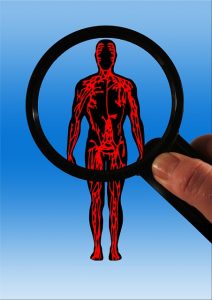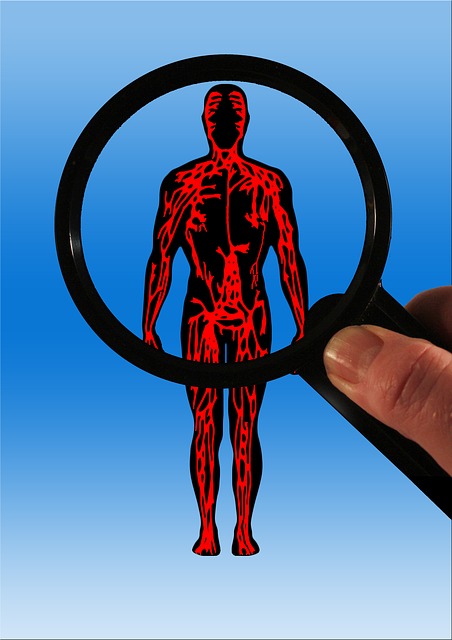Circulation refers to the movement of blood through the body, delivering oxygen and nutrients to cells and removing waste products. It is a vital process for maintaining overall health and wellbeing.
Poor circulation can lead to a range of symptoms, including fatigue, numbness or tingling in the extremities, cold hands and feet, and muscle cramps.
Benefits of Improved Circulation
 Improved circulation can have a range of benefits for overall health and wellbeing. One of the most noticeable benefits is increased energy levels. When blood flow is improved, cells receive more oxygen and nutrients, which can help boost energy levels and reduce fatigue.
Improved circulation can have a range of benefits for overall health and wellbeing. One of the most noticeable benefits is increased energy levels. When blood flow is improved, cells receive more oxygen and nutrients, which can help boost energy levels and reduce fatigue.
Improved circulation can also have a positive impact on cognitive function. The brain requires a steady supply of oxygen and nutrients to function properly, and improved circulation can help ensure that these needs are met. This can lead to better focus, concentration, and memory.
Better skin health is another benefit of improved circulation. When blood flow is increased, skin cells receive more oxygen and nutrients, which can help improve skin tone and texture. Improved circulation can also help reduce the appearance of fine lines and wrinkles.
Finally, improved circulation can help reduce the risk of heart disease and stroke. When blood flow is restricted, it can put extra strain on the heart and increase the risk of cardiovascular problems. By improving circulation, individuals can reduce their risk of these serious health issues.
Exercise for Improved Circulation
Exercise is one of the most effective ways to improve circulation. Aerobic exercise in particular has been shown to be beneficial for increasing blood flow throughout the body. Activities such as running, cycling, swimming, or brisk walking are all great options for improving circulation.
Exercise helps improve circulation by increasing heart rate and strengthening the cardiovascular system. This leads to more efficient blood flow throughout the body. Exercise also helps stimulate the production of nitric oxide, a molecule that helps dilate blood vessels and improve blood flow.
To incorporate exercise into your routine, start by setting aside time each day for physical activity. Aim for at least 30 minutes of moderate-intensity exercise most days of the week. If you’re new to exercise, start slowly and gradually increase the intensity and duration of your workouts over time.
Diet for Improved Circulation
Diet can also play a role in improving circulation. Certain foods are known to be beneficial for blood flow, while others can have a negative impact. Foods that are high in antioxidants, such as berries, leafy greens, and nuts, can help improve circulation by reducing inflammation and protecting blood vessels.
Foods that are high in omega-3 fatty acids, such as fatty fish and flaxseeds, can also be beneficial for circulation. These healthy fats help reduce inflammation and improve blood vessel function.
On the other hand, foods that are high in saturated fat and cholesterol can have a negative impact on circulation. These foods can contribute to the buildup of plaque in the arteries, which can restrict blood flow and increase the risk of heart disease.
To incorporate circulation-boosting foods into your diet, aim to eat a variety of fruits, vegetables, whole grains, lean proteins, and healthy fats. Limit your intake of processed foods, sugary drinks, and foods high in saturated fat.
Massage for Improved Circulation
Massage is another effective way to improve circulation. Certain types of massage, such as Swedish massage or deep tissue massage, can help stimulate blood flow throughout the body. Massage helps relax muscles and increase blood flow to the area being massaged.
Massage also helps stimulate the lymphatic system, which is responsible for removing waste products from the body. By improving lymphatic function, massage can help reduce swelling and inflammation in the body.
To find a qualified massage therapist, ask for recommendations from friends or family members or search online for licensed massage therapists in your area. Be sure to communicate your needs and preferences with your therapist to ensure that you receive the most effective treatment.
Herbal Remedies for Improved Circulation
Certain herbs can also be beneficial for improving circulation. Herbs such as ginger, ginkgo biloba, and cayenne pepper have all been shown to improve blood flow and reduce inflammation in the body.
Ginger is a natural anti-inflammatory that can help improve circulation by reducing inflammation in the blood vessels. Ginkgo biloba is an herb that has been used for centuries to improve cognitive function and increase blood flow to the brain. Cayenne pepper contains capsaicin, a compound that helps dilate blood vessels and improve blood flow.
To incorporate herbal remedies into your routine, talk to a qualified herbalist or healthcare provider. They can help you determine which herbs are safe and effective for your individual needs.
Improving circulation is an important aspect of overall health and wellbeing. By incorporating exercise, a healthy diet, massage, and herbal remedies into your routine, you can naturally improve blood flow throughout the body. It’s important to try different methods and find what works best for you in order to achieve optimal results.
With consistent effort, you can enjoy the many benefits of improved circulation, including increased energy levels, better cognitive function, improved skin health, and reduced risk of heart disease and stroke.









